Présenté à TakeOff (Lille) avec Marie-Cécile Paccard
Cover image

TL;DR
- Society is sexist/racist/ablesit/homophobic/etc, and so is tech
- This is caused by cognitive biases, which can be compared to brain bugs.
- UX practicioner attitude and tools can expose the truth behind the biases
- The world is much more diverse than we imagine
- Copy, apps, forms, recruiting material etc need to accomodate for this great diversity
Introduction
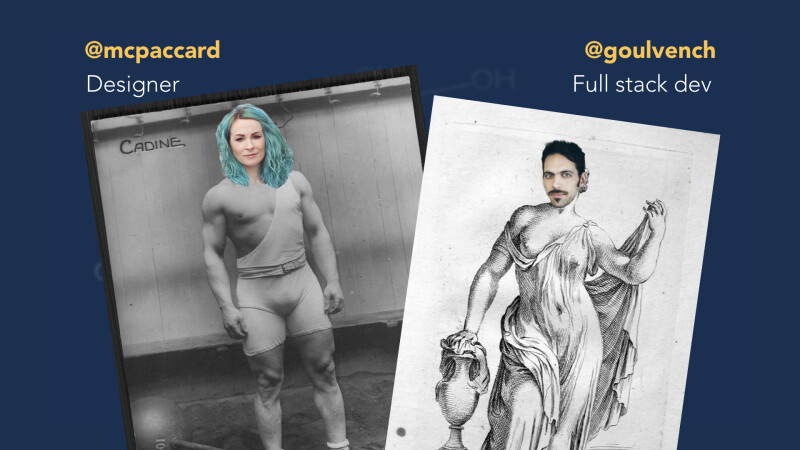
Hello everyone, we are Marie-Cécile Paccard, designer, and Goulven Champenois, full-stack developer.
Wonderland or rabbit hole?
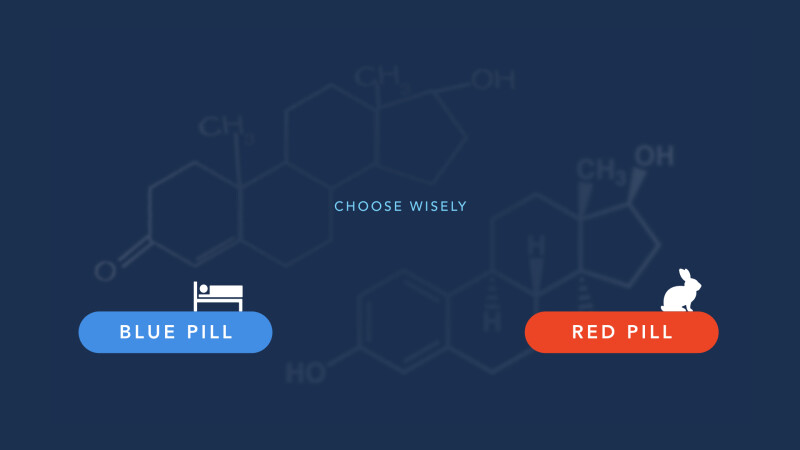
This is your last chance. After this, there is no turning back. You take the blue pill—the story ends, you wake up in your bed and believe whatever you want to believe. You take the red pill—you stay in Wonderland, and I show you how deep the rabbit hole goes. The Matrix
I hope you’ve had a great time during this TakeOff conference so far, because we’re about to ruin the mood. But it’s for your own good, as our parents used to say. Ready? Now choose if you want to take the blue or the red pill. Oops! The blue one just disappeared. We’ll have to take the red one, and see how deep the rabbit hole goes.
The age of reason

I code, therefore I am —would Descartes have said if he’d lived closer to us.
For centuries, the western world civilisation claims to be governed by Reason. BUT it isn’t.
Let’s take an example: there’s a shortage of developers. Yet every day thousands are turned away from studies or turned down by companies because of their gender, abilities, or the color of their skin.
This is not only bad for people as individuals, it’s also highly irrational and inefficient for society as a whole.
Bugs in the matrix
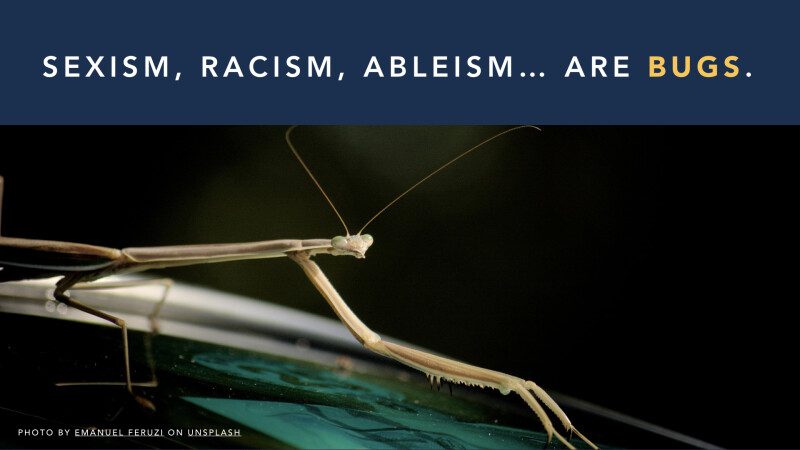
To put it another way: sexism, racism, homophobia, ableism etc are bugs. Which is sort of good, because we know how to fix bugs!
We start by looking at the stack trace, then test some assumptions, to finally squash these bugs!
Stack trace to the bottom
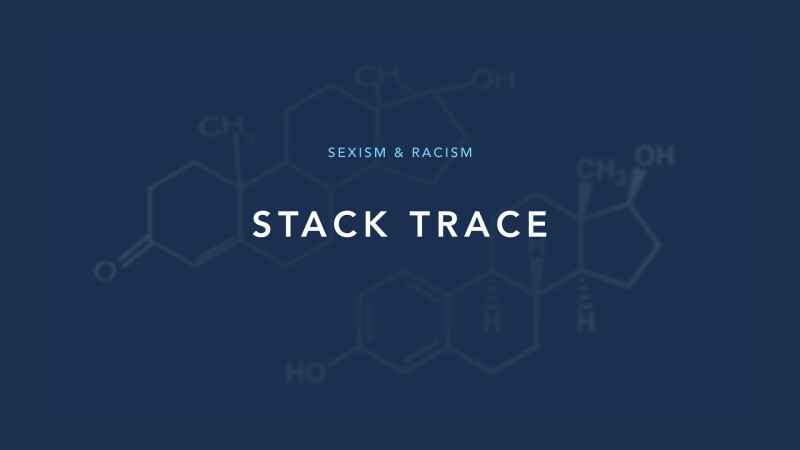
Okay, let’s start by digging into the stack trace of sexism and racism.
Where the streets have no female name
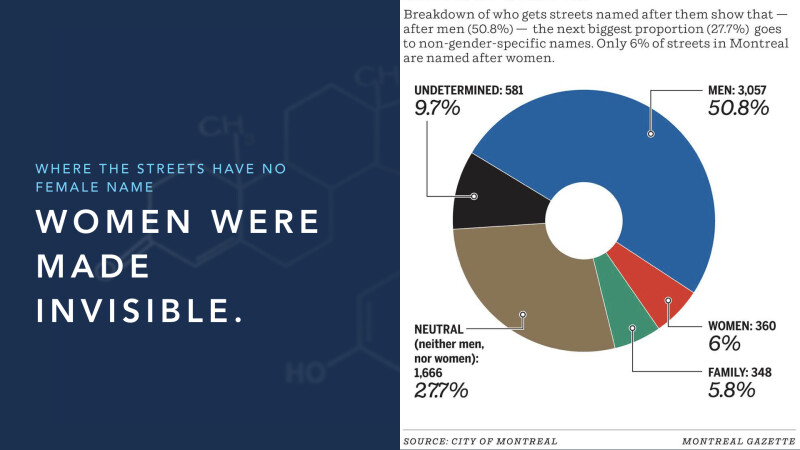
Street names make a very good stack trace because just like code, we constantly add new ones and don’t refactor.
The chart above shows the male-to-female proportion of street names in Montréal, Québec. More than half the streets are named after men, while women barely make 6%. This chart is not specific to Québec by the way, virtually all cities in all countries show the same imbalance. Oh and by the way, most of the women who gave their name to a street are wives or daughters of some famous man.
But why are there so few female street names? Why were women made invisible?
Say her name

Let me tell you about Rosalind Franklin. She’s one of the countless women who’ve contributed something incredibly valuable to humanity, yet remains virtually unknown.
She discovered the structure of DNA. She was fired from her lab and died from exposure to radiations while her work was stolen by her male colleagues who received the Nobel prize for it.
And there are many many more like her. In fact, since for centuries women were not allowed to hold intellectual property, their ideas were immediately attributed to someone else, which is why we know so few inventions credited to women.
Let’s play a game…
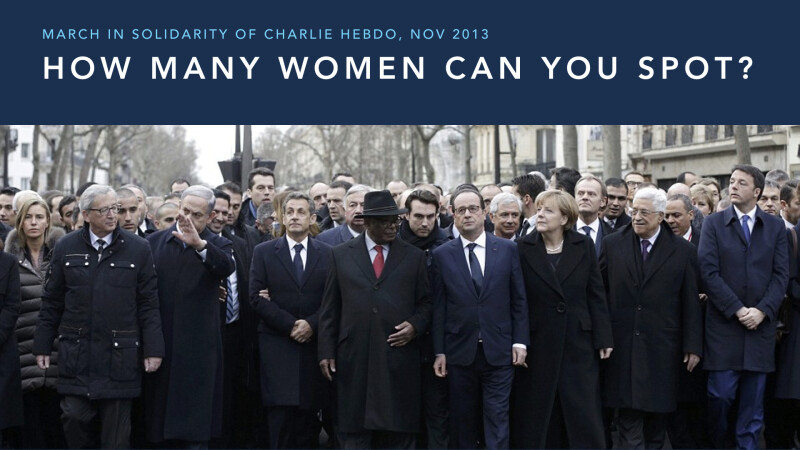
And it’s not only street names and science. Only 5% of world leaders are women. Just look at this picture of world leaders marching, protesting after the Charlie Hebdo attack. See how few women leaders there are?
This may be the norm, but it’s not normal.
…of hide and seek
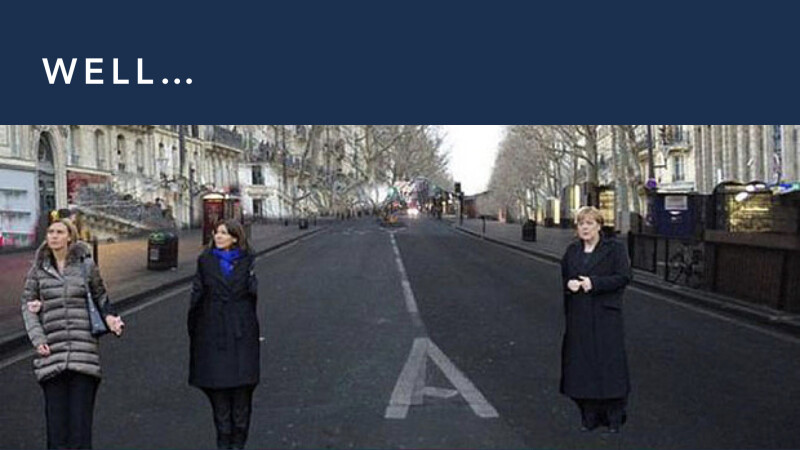
If we Photoshop the men away, the difference is glaring.
Where the streets have no female name
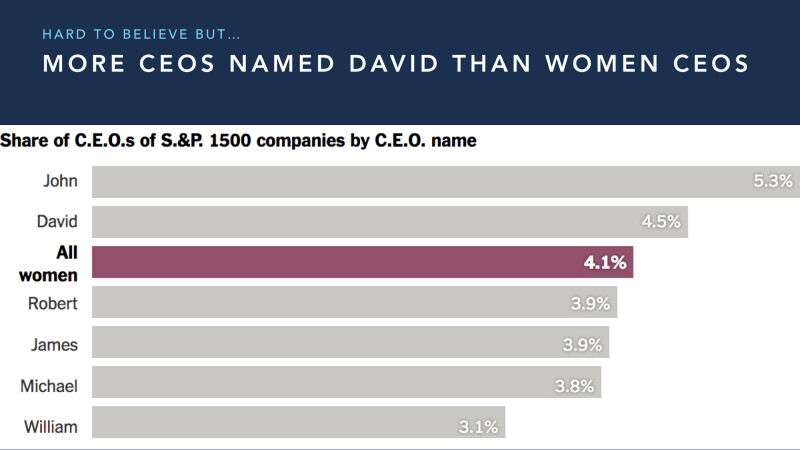
And it’s not only street names, science and politics. What this diagram shows is that there are more CEOs named David than women CEOs in the first 1500 companies listed in the S&P index.
Man purse
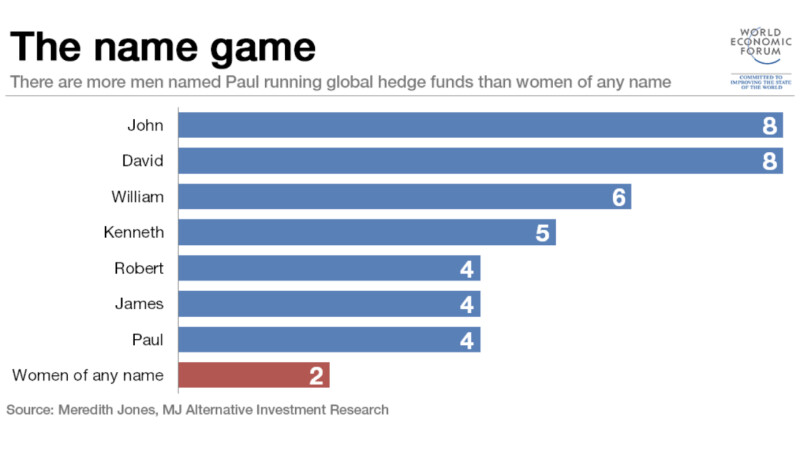
Even worse: according to the World Economic Forum, only 2 out of 39 global hedge funds are run by women. There is no rational scientific explanation for having 4 times more hedge fund managers named John than women, whatever their name. To be CEO of a successful startup, that startup has to be funded at first.
Tech leaders wear giant blinders
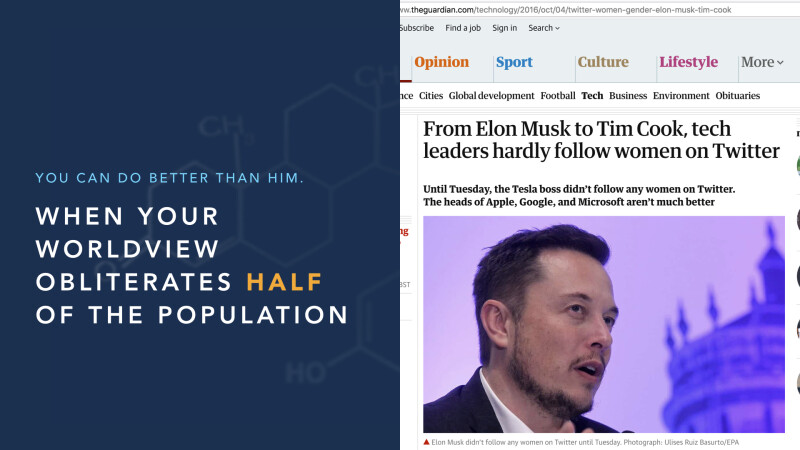
The problem with this an all-male cast of politicians, bankers, CEOs, and so on is that those people have a worldview that obliterates more than half the population.
For instance, journalists recently discovered that Elon Musk didn’t follow a single woman on Twitter, and that many others in the tech industry (Apple, Google, Microsoft, to name a few) had a ridiculous male to female follower ratio.
Glass ceilings
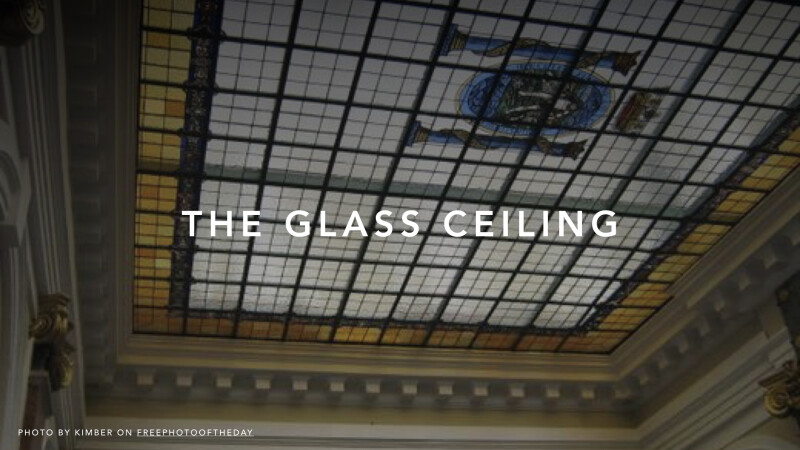
This phenomenon is called the glass ceiling: when there are gender or racial differences unexplained by other job-relevant characteristics of the employee. You may also hear about the “bamboo ceiling” when talking about asian americans, or that some people are glued to a “sticky floor” when they never get promoted despite comparable or better performance. These names may be funny, but the reality they describe is incredibly frustrating.
The Bechdel test
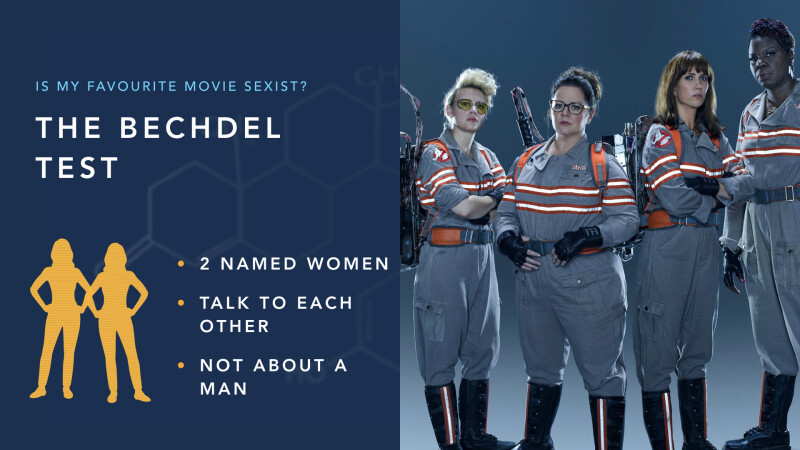
Wait, there’s one more: the celluloid ceiling. Women account for less than 20% of all directors, executive producers, producers, writers, cinematographers, and editors. I didn’t see it at first either. I used to find it normal to see men everywhere. I never questioned this fact. Then I discovered the Bechdel test, which indicates if a movie has female characters worth mentioning. For a movie to pass the Bechdel test it must have at least two named women characters, who talk to each other, and not about a man. That’s not a lot to ask but, sadly, most of my favorite movies didn’t even pass it…
Star balls
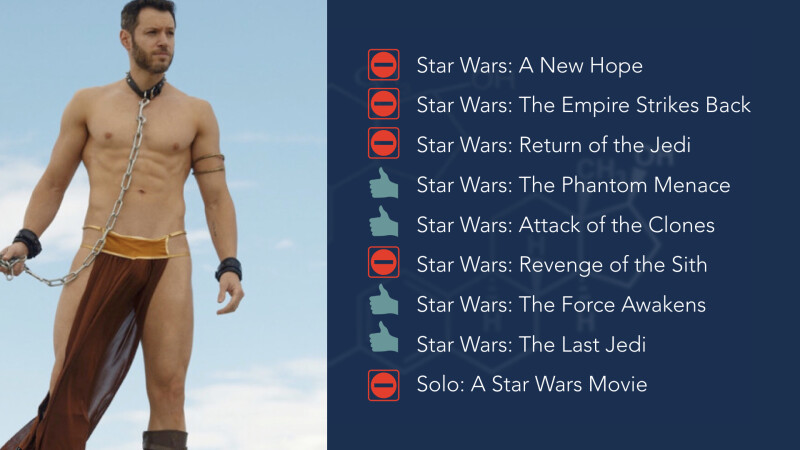
- Star Wars: A New Hope —doesn’t pass
- Star Wars: The Empire Strikes Back —doesn’t pass
- Star Wars: Return of the Jedi —doesn’t pass
- Star Wars: The Phantom Menace
- Star Wars: Attack of the Clones
- Star Wars: Revenge of the Sith —doesn’t pass
- Star Wars: The Force Awakens
- Star Wars: The Last Jedi
- Solo: A Star Wars Movie —doesn’t pass
Quality aside, more than half of all the Star Wars movies don’t pass the Bechdel test. Ouch. And even though the newer movies do slightly better, Disney chose not to sell Rey toys despite her important role. What were they afraid of, I wonder?
Oscars so white: tweetstorm edition
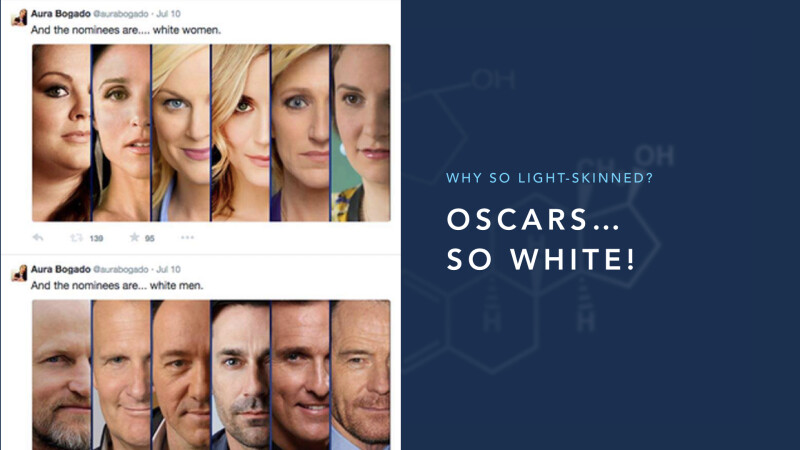
In 2015 the Internet was ablaze with the #OscarsSoWhite hashtag because all 20 nominees were white, once again.
This was shocking, but easily explained: the jury is almost exclusively white as well (94% white, 77% male, aged over 62 on average).
Whitewashing

Another factor is that white actors get cast even if their skin color doesn’t fit the role. Scarlett Johansson, for instance, is not even remotely Japanese yet she plays the lead role in Ghost in the shell, the movie. Jake Gyllenhaal’s ancestry includes Swedish, English, and Swiss-German. Why would he be chosen to play a Persian prince? Or —ouch— Willem Dafoe in the Last temptation of Christ, whitewashing Jesus himself. I wonder if he’ll be denied access to paradise for doing that.
End of stack trace reached
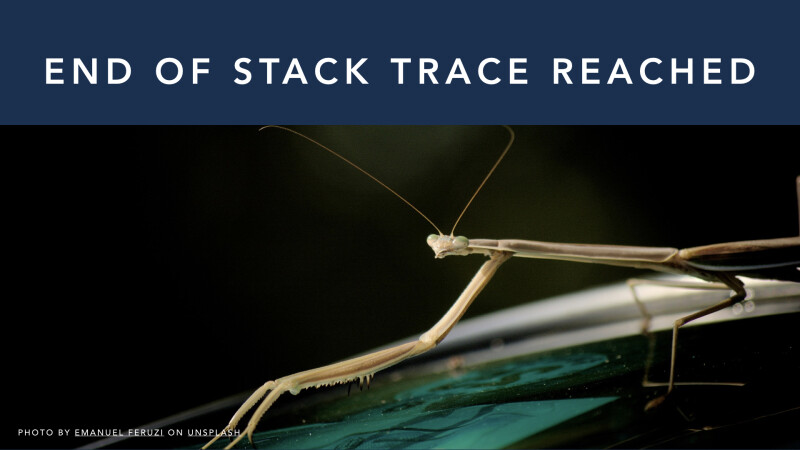
Phew, we’ve gone back 2 thousand years and sexism/racism/homophobia are still there. This is nothing new then. Because the source of the problem lies in our heads.
Cognitive biases
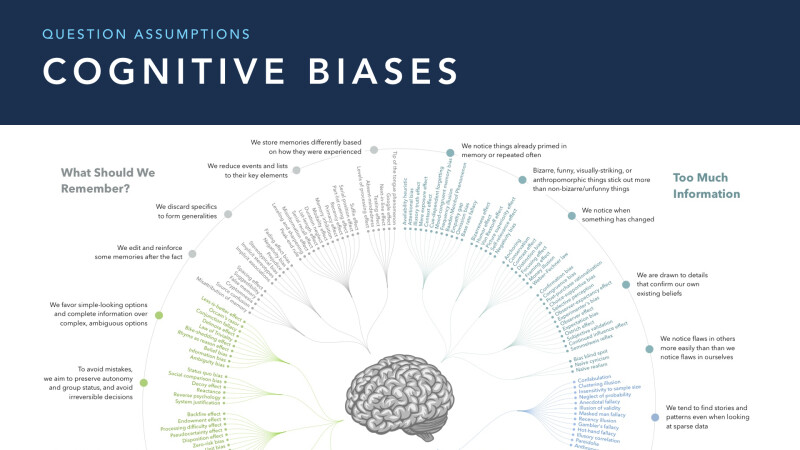
Our brains are fantastic. Studies have identified 170 biases, which are decision-making processes that short-circuit the rational part of our minds. Some of these biases help us sort information, some help us understand what is happening, or just take a quick decision in an emergency or stressful situation. But all of them tend to mess with us very deeply because we don’t notice them, and then we are very good at tacking rational explanations on top of bias-induced decisions.
Of bugs and cogs
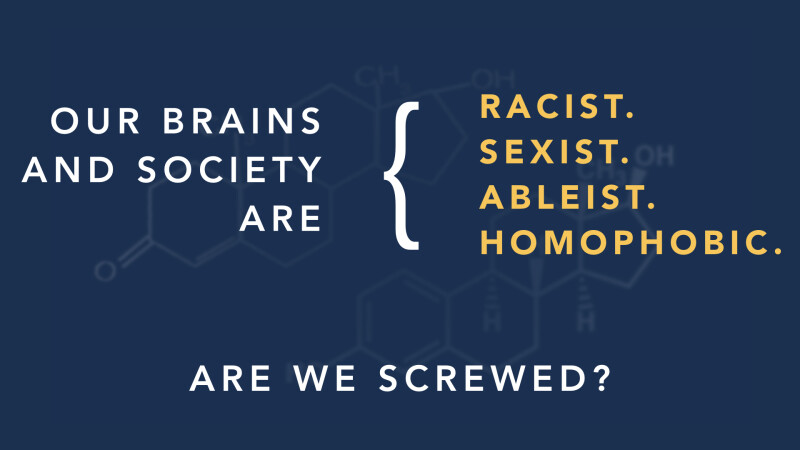
Our brains and society all fall prey to the racist/sexist/ableist/homophobic bugs. Are we screwed then?
In a way, yes, because it means you will certainly hurt people sometimes, even if you don’t want to.
But humans love adapting to their surroundings (the only species to be found from the equator to the poles), and changing their circumstances. So there’s hope.
Kind of blue

Let’s take the blue pill this time.
The mythical man-math-gene
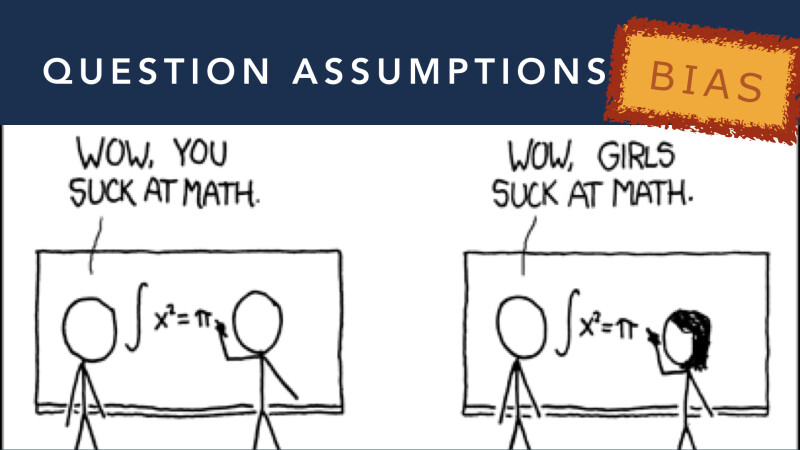
We now know that we should always question assumptions. For instance, the idea that men are “naturally” better at Maths and STEM comes from a bias. If you look closer into computer and programming history, inventors, pioneer developers, engineers and operators were all women. We used to give them all the work because they were reliable and thorough. People even used the “kilo girl” unit, the amount of work women could do in a given time.
Question assumptions
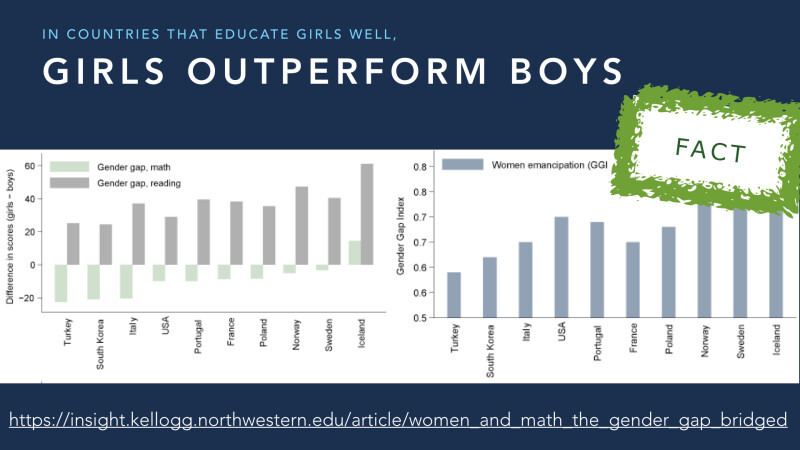
Now that you know about biases you will look for facts, and see that numbers (in a study comparing PISA results and gender discrimination) actually tell the opposite story. In countries giving girls the same access to education, girls outperform boys in all fields —by a tremendous margin. And a study based on Github data found that female contributors had a much higher PR acceptance rate than men.
So much for the fallacy that “men are naturally better at STEM”…
Watch and learn
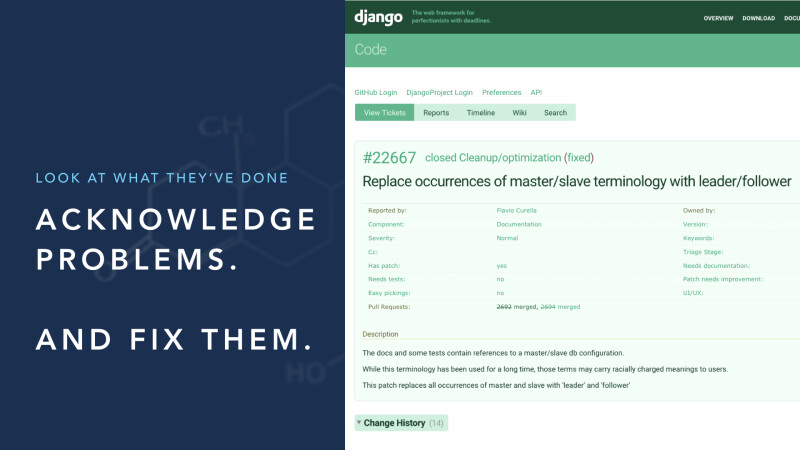
Now that you know about different perspectives, you may look at naming conventions and realise that they ought to change. The Django team for instance chose to get rid of “slave” and “master” names for databases because they acknowledged that it conjures bad memories for a lot of people. And, apart from the few (white) people saying “why change that? Surely people can understand that it’s only historical and not derogatory?”, there are hundreds of messages saying “Thank you, as a person of color, this means a lot to me”.
Game Girl still missing
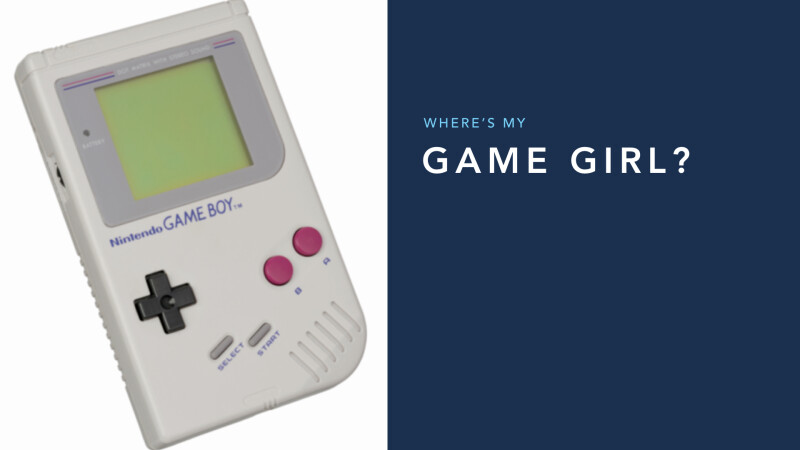
Or you may look at Nintendo’s iconic game console and wonder what would have happened if it had been called a “Game player” instead of a “Game Boy”. Maybe women playing video games today wouldn’t face the same amount of harassment from male players.
Slack’s emojis
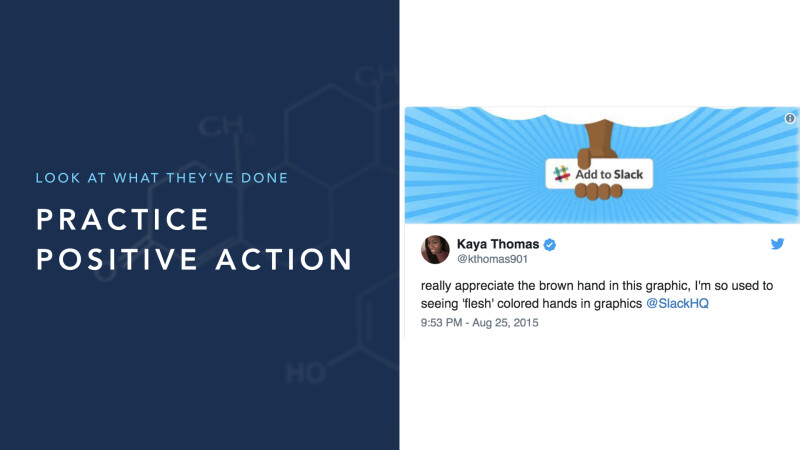
Or you might, as a designer, realise that Slack’s emojis were not really representative of people’s complexion, and add emojis with different skin colours. You can’t imagine the number of positive reactions and the dozens of people thanking the designer for making that happen.
Representation
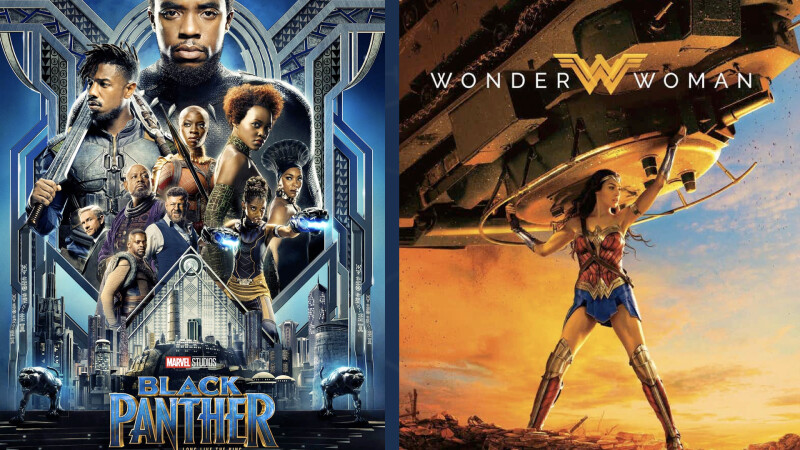
Yes, this may seem trivial for you, white and able and male, but it is all about representation. Look at Black Panther or Wonder Woman for instance: for the first time in decades, people of color and women could identify with super heroes and characters that were not either whitewashed, or stripped off of an important cultural part.
It’s just another Marvel adaptation for you, but for a lot of people it means way more than that. I (Marie) was giggling on my cinema seat seeing Diana Price kicking some sweet men’s butts.
Fight bias back
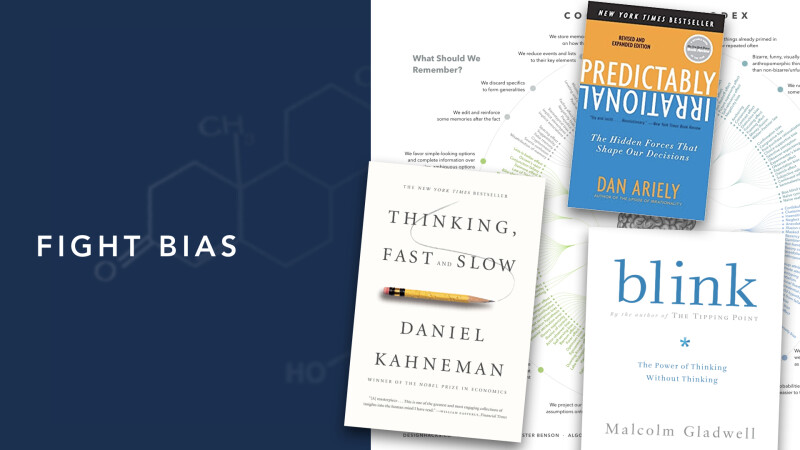
If you’re serious about fighting your biases, you should start by reading these books:
- Blink, by Malcolm Gladwell, it may be a little fuzzy on the science side but it’s great for starters because it reads like a novel;
- Predictably irrational, by Dan Ariely, who was piqued to study the way our brains evaluate pain because the skin of his entire body was burned and his bandages had to be renewed several times a day for months.
- Thinking, fast and slow, by Daniel Kahneman, who received the Nobel prize in economy for the ideas exposed in this book.
Welcome to Wonderland Broland

As you question all these assumptions, you will realise that you’ve always lived in broland.
- A magical country full of beer and pizza and in-jokes and all-nighters, and even a few unicorns, up there beyond the Male tears sea and the Mansplaining ocean.
- A country which claims to be a meritocracy —but isn’t.
- A country where you can be yourself —as long as you fit the cliché like everyone else.
- One could even say, in light of the recent acquisition of Github by Microsoft an open-source country with very narrow gates.
How big a deal is this?
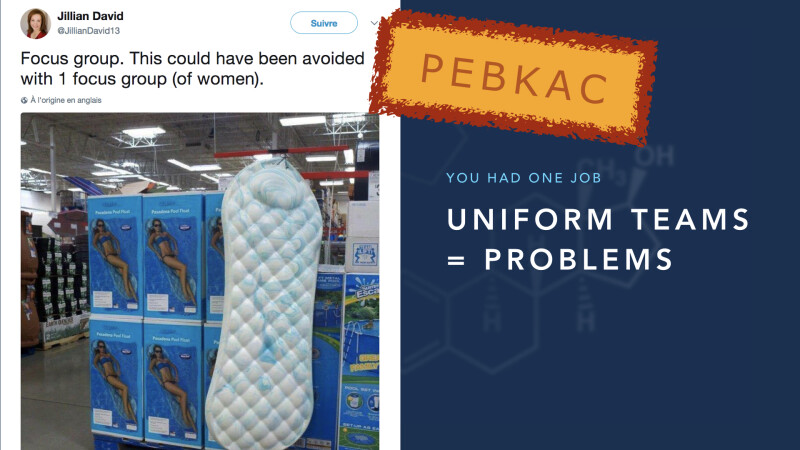
Well, sometimes it’s not such a big deal indeed, and you only end up with a gorgeous giant periods pad when you just wanted a nice pool bed.
This inoffensive blunder would have been avoided by presenting the design to one human being who had already used a pad, but the product designers here never came near one.
This is the kind of problems that homogenous teams encounter.
“How we accidentally made a racist videogame”
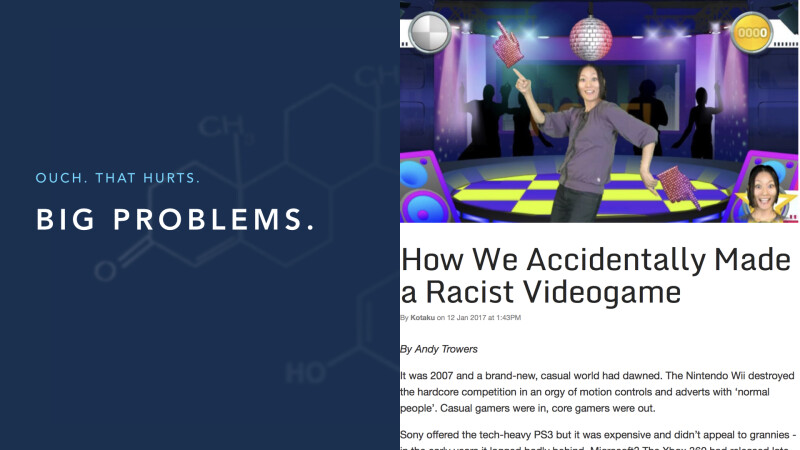
Or you may have bigger problems, like the people in this game studio, who promoted their dancing game on Times Square. Problem: the night before, they realized that the sensor didn’t “see” black people.
They worked all night but couldn’t get the problem fixed on time. This went from epic fun to epic shame. At least they learned a lesson.
The thing is, problems such as these show that our products inherit our biases.
Code is law
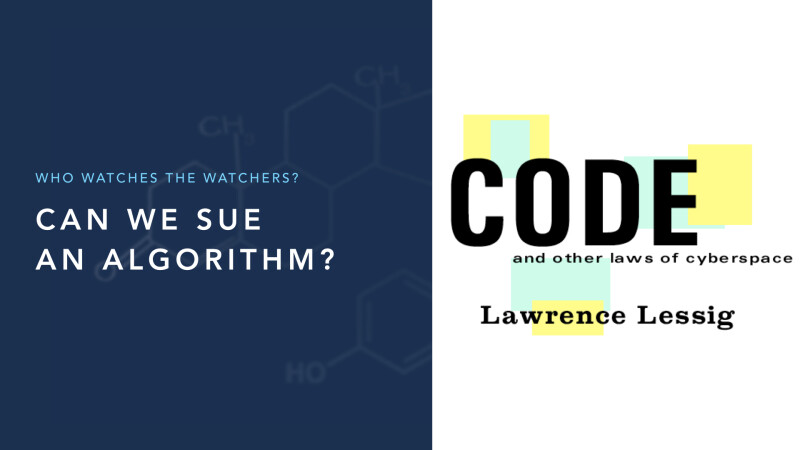
Whether we want it or not, code is law. The way we design and code products, forms and apps define what is possible or not, and who is included or not.
But there are no Chief Ethics Officer to verify that code meets guidelines. And from a user perspective, code is opaque. And in case an issue can be spotted, we can’t sue or appeal against an algorithm or even worse, an AI fed with racist data.
Ensure objectivity
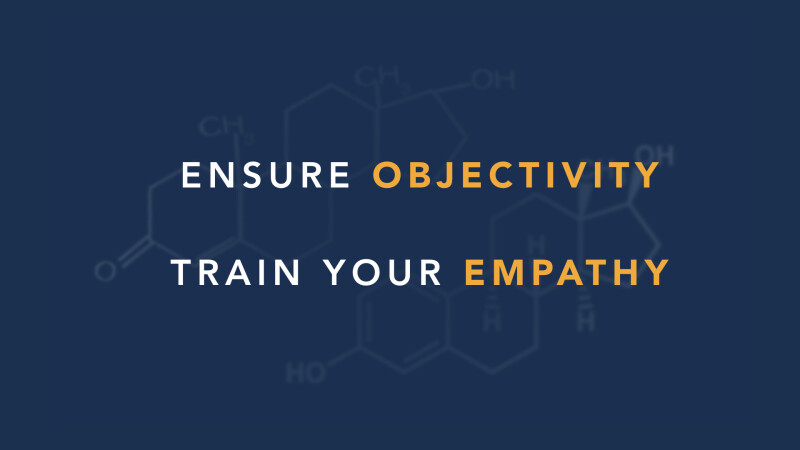
We all suffer from sexist biases. And racist biases. And ableist, homophobic, you name it. It’s impossible not to inherit these traits while growing up because they are part of our cultural heritage.
The sad new is: even if you don’t consciously want to hurt people, you necessarily have biases, and biases by definition drive your decisions. It takes a long time to figure out sexism and racism because they were here before we were even born. Our brains just reproduce what we were shown all this time.
You may not define yourself as racist, but that doesn’t prevent you from acting like one.
So the best way to make sure that code and designs are free of bias bugs is to look for objective figures, and test with real users.
And train your empathy to make sure that you actually take into acount the test results. As a side-note, empathy is a fragile thing so we encourage you to be mindful of your mental health, burnout and chronic lack of sleep reduce empathy.
Learn about your users
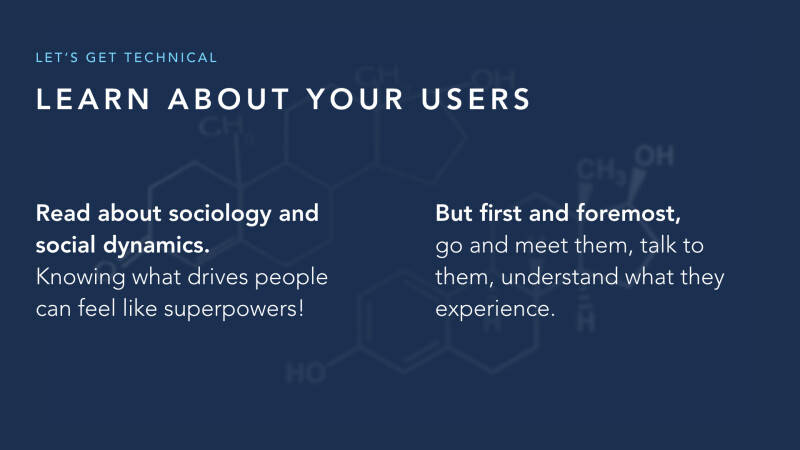
Read about sociology and social dynamics, as this will help you understand your own motivations and those of your users. You’ll gain a sort of X-ray vision —yay superpowers!
But first and foremost go and meet people and listen to their stories, even it means going out of your comfort zone at first, it is your duty. After all, if you never meet with the product owner, your process is not really agile.
There are no edge cases
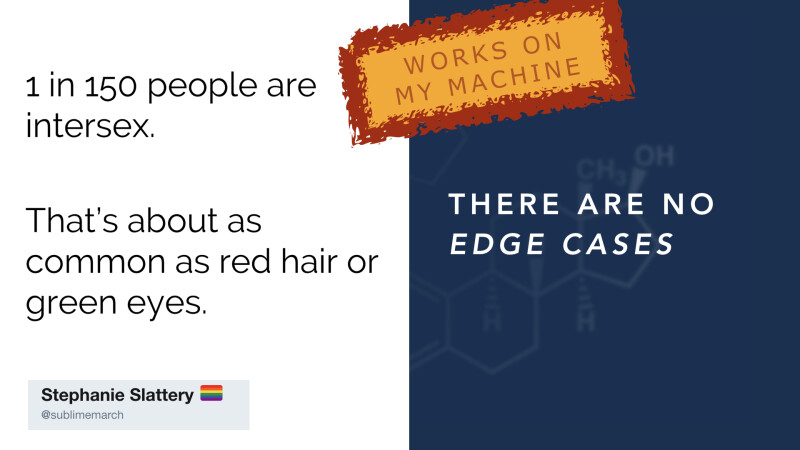
You may be surprised by what you find in the real world, outside of Broland. Did you know that being intersex is as common as having red hair or green eyes?
Once and for all, people are not “edge cases”. And by people we mean everyone: women, asian, young parents, disabled, elderly people, etc. We should actually stop using the term “edge case” entirely and practice inclusivity by design instead. Access to everyone, as Tim Berners-Lee puts it.
Test with the right people
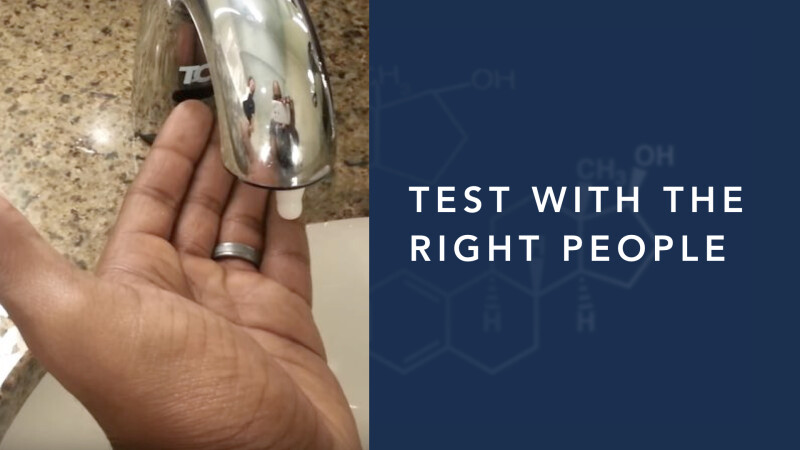
Once again, test with the right set of people. Don’t rely on your team only. Don’t hire just people who look like you.
Don’t design racist soap dispensers
Binary is for bits
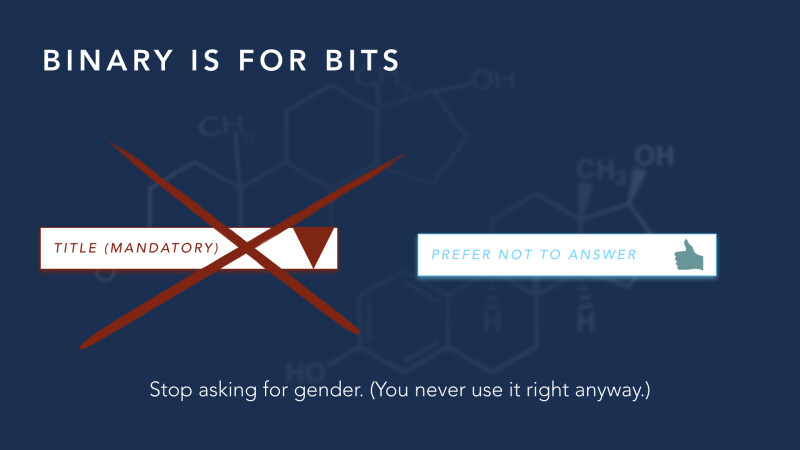
When you design forms, remember that binary is for bits only.
Some people identify neither as man nor woman. When asking for gender, add a third option “Prefer not to answer”. Ask yourself if you really need to know people’s gender. Even better, stop asking for it, because it’s not really meaningful (some couples log in using the same account for instance) and rarely used (appropriately) anyway.
Also, not everyone wants a valentine or father’s day or mother’s day message, because they don’t need reminding that their parents are no longer there. Some people don’t want to see ”last year’s memories” year after year because someone dear to them passed away then, like Eric Meyer’s daughter Rebecca. Nice and cool features can hurt people even if you don’t want it to.
What’s in a name?
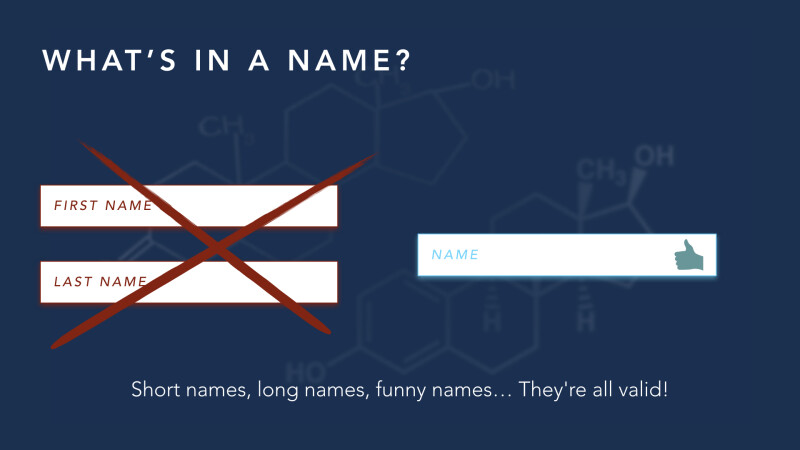
Some people have no first names, or their name is only two characters long. Who are we to tell them that the name on their ID card is “invalid”?
Some people have a name that will be rejected by a regular expression because it doesn’t look standard (accented letters on international websites for instance), or look like a fake name (native americans face this all the time because of Facebook’s broken “real name” policy). This is their real name.
Audit your job descriptions
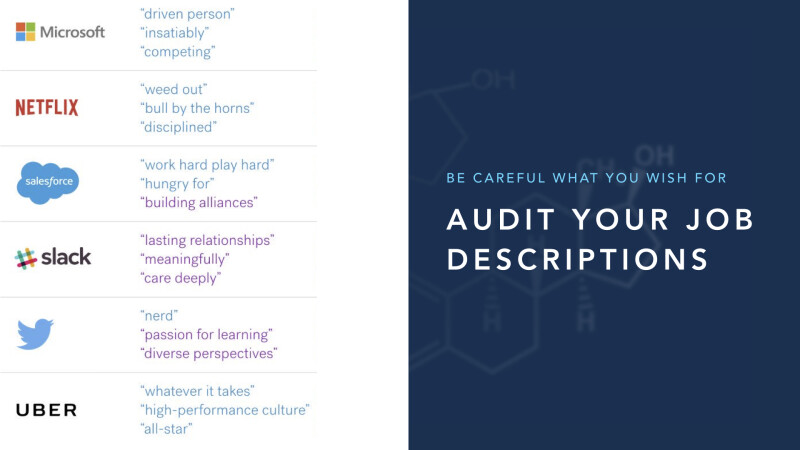
But there’s more to life than code (and beers). Look at what job descriptions say about your company. Amazon for instance wants to hire maniacs, Twitter looks for nerds (seems legit), and Uber values people without the least trace of basic human decency (“whatever it takes” attitude).
Actually, if you compare these job descriptions with the sort of problems that the companies face you’ll see correlation. As the saying goes, be careful what you wish for.
If you don’t want to hire toxic people, make sure it shows in your recruiting material.
Bye, “guys”
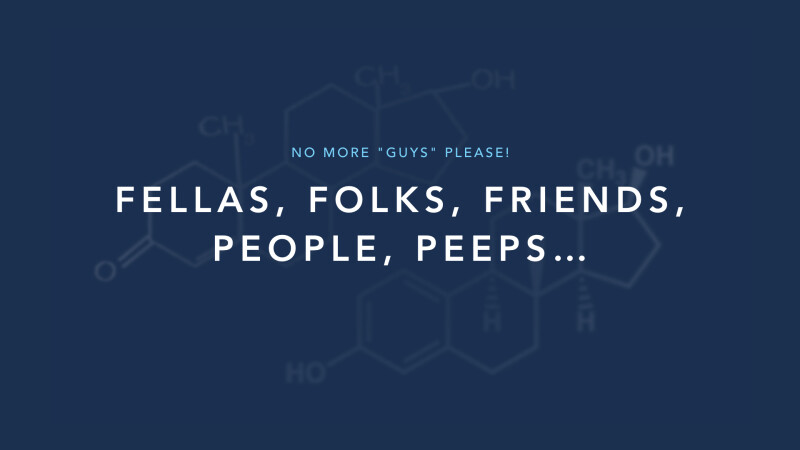
Words matter in the workplace too. Can we please find something to replace “guys” and make women feel more welcome? YES! There are words a-plenty: folks, friends, people, peeps, pals…
It may seem pointless to you but for women, people of colour, LGBTQ people and so on it means you care, and that’s a very good start.
Culture fit is a myth
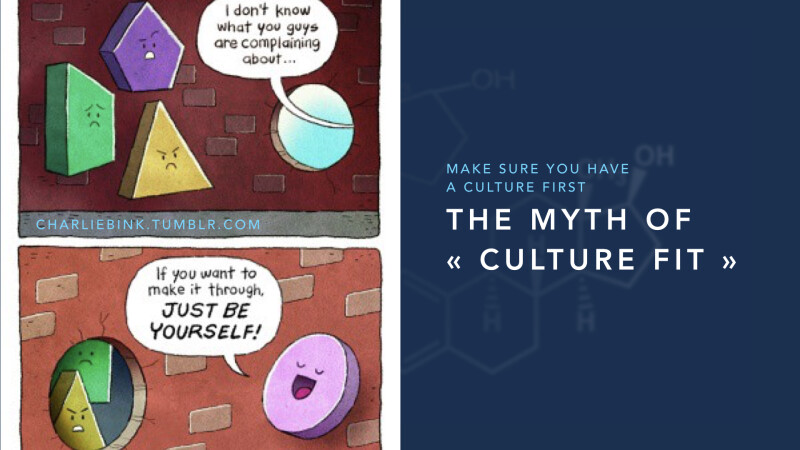
Women in management positions have to act “bossy” to be listened to, but they are then discriminated because of this very attitude.
Women software engineers @facebook are 35% more likely to have their code rejected by the company’s peer review system —quoted by Mar Hicks
You need to be aware of that fact when hiring or evaluating people.
Bridging the chasm

Trans men and women can help us see what is invisible to most of us.
I once read the story of a freelance film-maker who, after transitioning and being identified as a woman, saw her clients’ behaviour suddenly change. Even though she had the exact same skills and references as before, people were now telling her that the lighting wasn’t right, or that she should place her camera differently.
And studies have confirmed that we don’t evaluate men and women by the same criteria. While men are judged on skills, women also need to have experience and the “right” attitude. This causes unequal and unfair treatment.
What can conferences companies do to attract more women
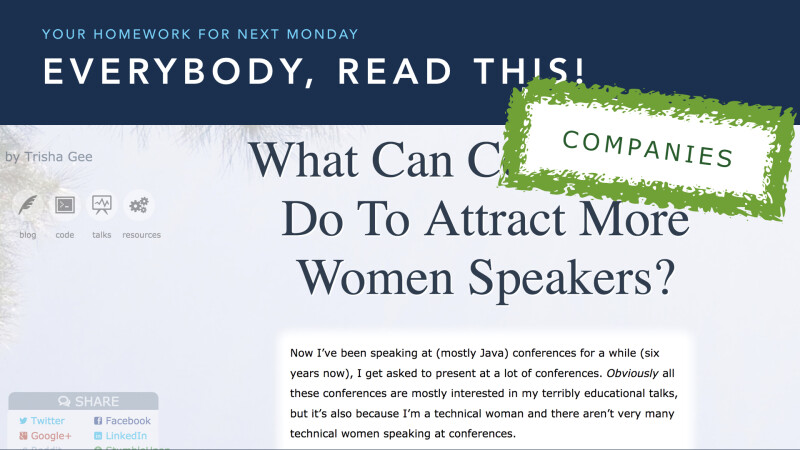
Trisha Djee is a Java developer and speaker, and she was tired of always explaining how to have a more diverse speaker lineup to conference organizers, because it’s not OK to ask women to do all the work to foster diversity.
So she wrapped all her ideas in a blog post and let me tell you: it’s a gold mine, and a lot of it works when recruiting, too, so go read it.
Add a code of conduct
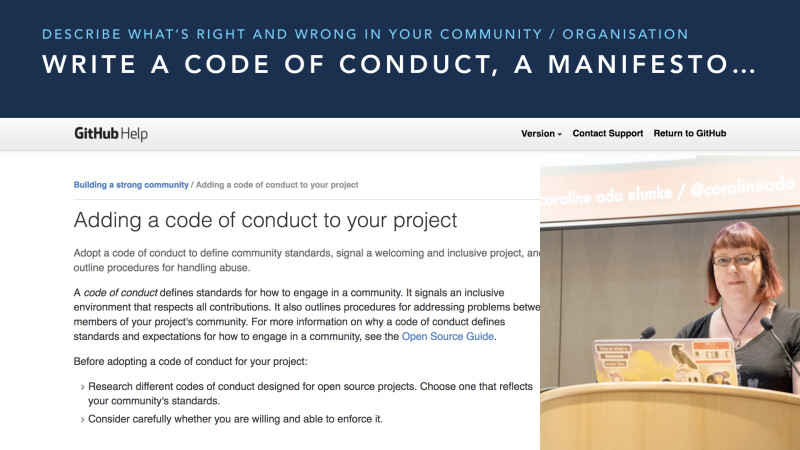
The first advice that Trisha gives is to put out a Code of Conduct —and enforce it if need be.
Even for something as trivial as a project it is important to explain how you will work and what are the values that you want to nurture through your work.
Thanks to Coraline Ada’s work (it’s her, on the right), it’s now a one-click operation on Github.
Make rules explicit
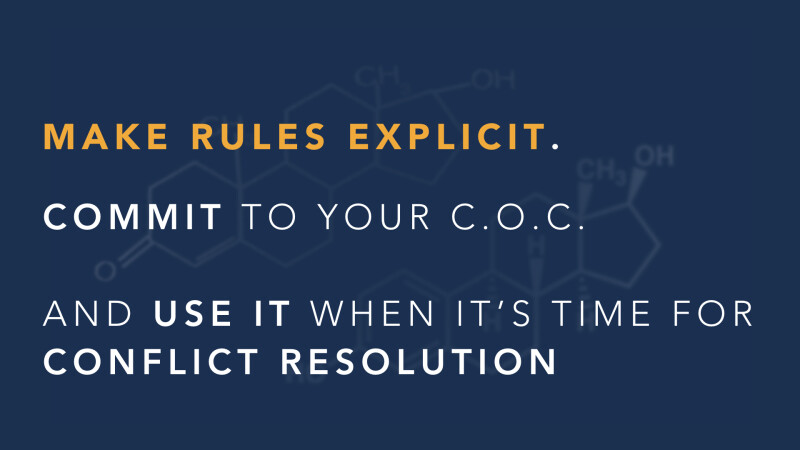
As long as things are not clearly said, people won’t know or be able to hold anyone accountable.
Describe what is not allowed and why you won’t tolerate intolerance, then enforce your code of conduct. If someone is being a jerk, harassing or misbehaving with other coworkers contributors or attendees, step up and use the rules you set to fix the situation. Nobody likes doing that, but safety for everyone is more important.
Commit to your Code of Conduct and use it when needed for conflict resolution.
A11Y aka accessibility
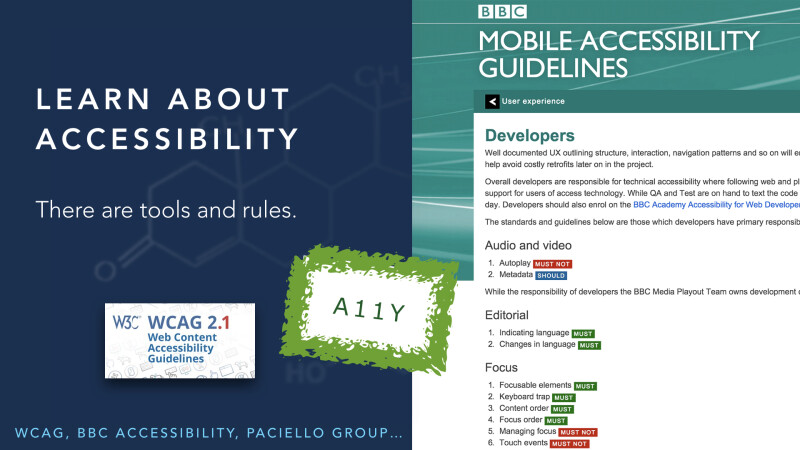
Learn about accessibility. There’s a ton of tutorials on the Web for that, and it makes you better developers and better human beings.
Some useful links:
Hidden handicaps
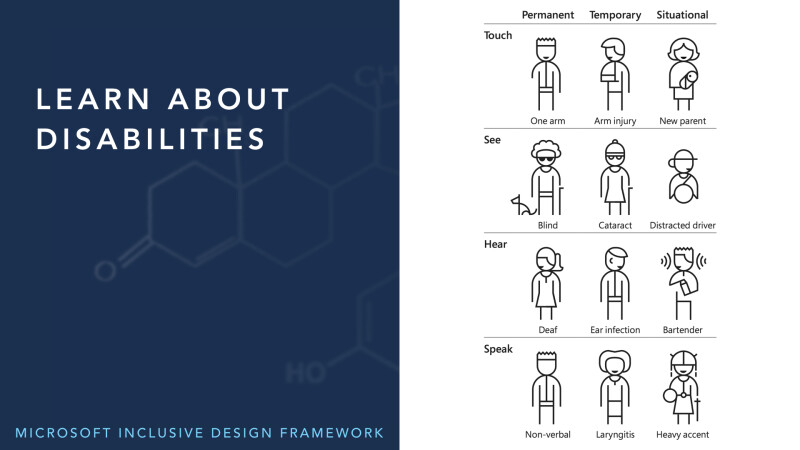
Accessibility does not only mean physically disabled people. Some diseases are invisible, like chronic pain or mental issues, which can disturb focus and prevent from understanding your interface. Don’t frown on people using elevators or reserved seats even if you don’t see a reason for them to do that.
Designing accessible websites and applications is the right thing to do, and helps more than permanently disabled people. You too will benefit from accessible designs if you brake your leg or need to use an app or website with a flaky connection, your arms loaded, or when distressed.
Disabilities can be permanent but also temporary or situational.
A heavy accent can be tricky to use conversational interfaces. Ever thought about that?
Diversity is Slack’s advantage
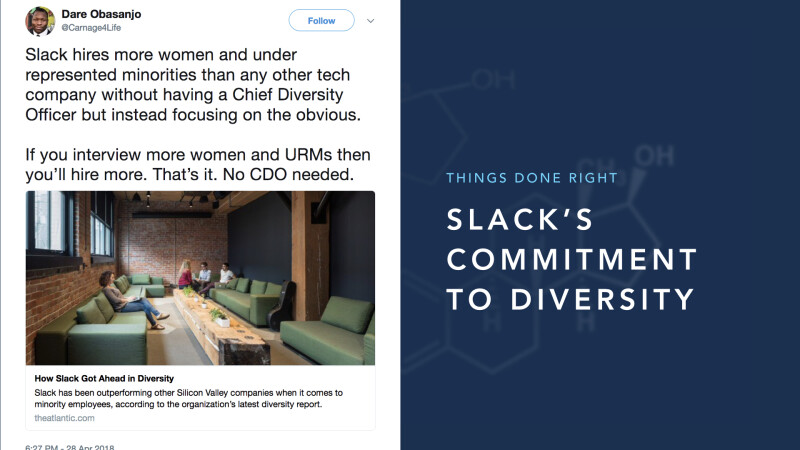
We’re almost done, so let’s end with a cheerful note: Slack published their annual diversity figures recently, and they quite closely mirror the american population, way more than other companies at least:
- 44% women
- 12,6% non white
- 8,7% of people identifying as LGBTQ+
When you’re a fast-growing company, ignoring an enormous talent pool just because your biases blind you is a surefire way of missing opportunities.
Time to act

What we all have to do to make the world a better place:
- Believe the testimonials of women, LGBTQ, POC, disabled people
- Educate ourselves on systemic oppressions, intersectionality, etc
- Acknowledge our privileges, learn to use it to help others
- Learn about our own biases and how to fight them
- Leave space for underrepresented people (call for papers…)
- Stop laughing at oppressive jokes, call people out when they say one. Asking people to explain what’s so funny puts them in the discomfortable position of realising that indeed, such jokes are oppressive and not funny at all
- Follow women, POC, non binary people on social networks
- Use pictures of underrepresented people in presentations and mockups —Marie has used women and people of color on deliverables for years and nobody asked her to change any of it
- Accept the temporary discomfort of building a better world for everyone <3
Reading list
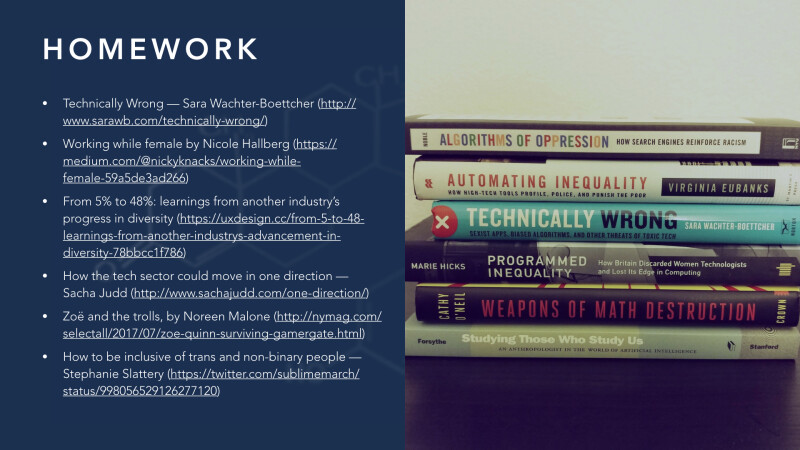
Books
- Technically Wrong by Sara Wachter-Boettcher
- Algorithms of oppression
- Automating inequality
- Programmed inequality
- Weapons of math destruction
- Studying those who study us
Links
- Born for it by Birgitta Böckeler
- Working while female by Nicole Hallberg
- From 5% to 48%: learnings from another industry’s progress in diversity
- How the tech sector could move in one direction by Sacha Judd
- Zoë and the trolls, by Noreen Malone
- How to be inclusive of trans and non-binary people by Stephanie Slattery
- What Github did to kill its trolls by Kristen V. Brown
- Antisocial Coding: My Year at GitHub By Coraline Ada Ehmke
- Understanding the journey
- If you think women in tech is just a pipeline problem, you haven’t been paying attention by Rachel Thomas
- I suck at diversity by Randi Lee Harper
- Some garbage I used to believe about equality by Johnathan Nightingale
- Wall St. has a problem with women. Here’s why you should confront it
- A black man walks into the San Fransisco CTO summit… by @Shaft
- Diversity in Tech: The Unspoken Empathy Gap by Jules Walter
- The real reason my startup was successful: privilege by Jason Ford
How biased is your Twitter feed?
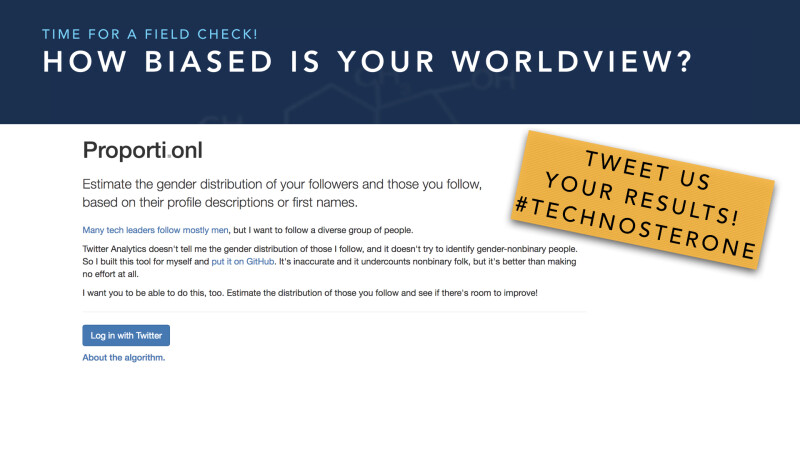
One last thing: there’s a tool called proportionl which tries to guess how many of the people you follow on Twitter are men, women, non-binary or brands, and returns a percentage for each. Please tweet us your results with the #technosterone hashtag!
Thank you all for listening, and many thanks to the TakeOff team for inviting us.